The Jargon File by Eric S. Raymond (ebook reader android txt) 📕
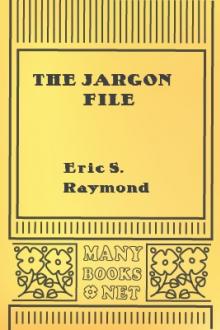
- Author: Eric S. Raymond
- Performer: -
Book online «The Jargon File by Eric S. Raymond (ebook reader android txt) 📕». Author Eric S. Raymond
have in their rooms: TV, radio, electric razor, typewriter, tape
player, ... no computer terminals. Computer terminals weren't on the
list, so the guard wouldn't let it in. Rules are rules, you know.
(This guard was clearly a [15203]droid.)
Fair enough, said the two friends, and they left again. They were
frustrated, of course, because they knew that the terminal was as
harmless as a TV or anything else on the list... which gave them an
idea.
The next day they returned, and the same thing happened: a guard
stopped them and asked what they were carrying. They said: "This is a
TV typewriter!" The guard was skeptical, so they plugged it in and
demonstrated it. "See? You just type on the keyboard and what you type
shows up on the TV screen." Now the guard didn't stop to think about
how utterly useless a typewriter would be that didn't produce any
paper copies of what you typed; but this was clearly a TV typewriter,
no doubt about it. So he checked his list: "A TV is all right, a
typewriter is all right ... okay, take it on in!"
[Historical note: Many years ago, "Popular Electronics" published
solder-it-yourself plans for a TV typewriter. Despite the essential
uselessness of the device, it was an enormously popular project. Steve
Ciarcia, the man behind "Byte" magazine's "Circuit Cellar" feature,
resurrected this ghost in one of his books of the early 1980s. He
ascribed its popularity (no doubt correctly) to the feeling of power
the builder could achieve by being able to decide himself what would
be shown on the TV. --ESR]
[Antihistorical note: On September 23rd, 1992, the L.A. Times ran the
following bit in Steve Harvey's `Only in L.A.' column:
It must have been borrowed from a museum: Solomon Waters of
Altadena, a 6-year-old first-grader, came home from his first day
of school and excitedly told his mother how he had written on "a
machine that looks like a computer-but without the TV screen."
She asked him if it could have been a "typewriter."
"Yeah! Yeah!" he said. "That's what it was called."
I have since investigated this matter and determined that many of
today's teenagers have never seen a slide rule, either.... - ESR]
Node:A Story About Magic, Next:[15204]Some AI Koans,
Previous:[15205]TV Typewriters, Up:[15206]Appendix A
A Story About `Magic'
Some years ago, I (GLS) was snooping around in the cabinets that
housed the MIT AI Lab's PDP-10, and noticed a little switch glued to
the frame of one cabinet. It was obviously a homebrew job, added by
one of the lab's hardware hackers (no one knows who).
You don't touch an unknown switch on a computer without knowing what
it does, because you might crash the computer. The switch was labeled
in a most unhelpful way. It had two positions, and scrawled in pencil
on the metal switch body were the words magic' andmore magic'. The
switch was in the `more magic' position.
I called another hacker over to look at it. He had never seen the
switch before either. Closer examination revealed that the switch had
only one wire running to it! The other end of the wire did disappear
into the maze of wires inside the computer, but it's a basic fact of
electricity that a switch can't do anything unless there are two wires
connected to it. This switch had a wire connected on one side and no
wire on its other side.
It was clear that this switch was someone's idea of a silly joke.
Convinced by our reasoning that the switch was inoperative, we flipped
it. The computer instantly crashed.
Imagine our utter astonishment. We wrote it off as coincidence, but
nevertheless restored the switch to the `more magic' position before
reviving the computer.
A year later, I told this story to yet another hacker, David Moon as I
recall. He clearly doubted my sanity, or suspected me of a
supernatural belief in the power of this switch, or perhaps thought I
was fooling him with a bogus saga. To prove it to him, I showed him
the very switch, still glued to the cabinet frame with only one wire
connected to it, still in the `more magic' position. We scrutinized
the switch and its lone connection, and found that the other end of
the wire, though connected to the computer wiring, was connected to a
ground pin. That clearly made the switch doubly useless: not only was
it electrically nonoperative, but it was connected to a place that
couldn't affect anything anyway. So we flipped the switch.
The computer promptly crashed.
This time we ran for Richard Greenblatt, a long-time MIT hacker, who
was close at hand. He had never noticed the switch before, either. He
inspected it, concluded it was useless, got some diagonal cutters and
[15207]diked it out. We then revived the computer and it has run fine
ever since.
We still don't know how the switch crashed the machine. There is a
theory that some circuit near the ground pin was marginal, and
flipping the switch changed the electrical capacitance enough to upset
the circuit as millionth-of-a-second pulses went through it. But we'll
never know for sure; all we can really say is that the switch was
[15208]magic.
I still have that switch in my basement. Maybe I'm silly, but I
usually keep it set on `more magic'.
1994: Another explanation of this story has since been offered. Note
that the switch body was metal. Suppose that the non-connected side of
the switch was connected to the switch body (usually the body is
connected to a separate earth lug, but there are exceptions). The body
is connected to the computer case, which is, presumably, grounded. Now
the circuit ground within the machine isn't necessarily at the same
potential as the case ground, so flipping the switch connected the
circuit ground to the case ground, causing a voltage drop/jump which
reset the machine. This was probably discovered by someone who found
out the hard way that there was a potential difference between the
two, and who then wired in the switch as a joke.
Node:Some AI Koans, Next:[15209]OS and JEDGAR, Previous:[15210]A Story
About Magic, Up:[15211]Appendix A
Some AI Koans
These are some of the funniest examples of a genre of jokes told at
the MIT AI Lab about various noted hackers. The original koans were
composed by Danny Hillis, who would later found Connection Machines,
Inc. In reading these, it is at least useful to know that Minsky,
Sussman, and Drescher are AI researchers of note, that Tom Knight was
one of the Lisp machine's principal designers, and that David Moon
wrote much of Lisp Machine Lisp.
* * *A novice was trying to fix a broken Lisp machine by turning the power
off and on.
Knight, seeing what the student was doing, spoke sternly: "You cannot
fix a machine by just power-cycling it with no understanding of what
is going wrong."
Knight turned the machine off and on.
The machine worked.
* * *One day a student came to Moon and said: "I understand how to make a
better garbage collector. We must keep a reference count of the
pointers to each cons."
Moon patiently told the student the following story:
"One day a student came to Moon and said: `I understand how to make
a better garbage collector...
[Ed. note: Pure reference-count garbage collectors have problems with
circular structures that point to themselves.]
* * *In the days when Sussman was a novice, Minsky once came to him as he
sat hacking at the PDP-6.
"What are you doing?", asked Minsky.
"I am training a randomly wired neural net to play Tic-Tac-Toe"
Sussman replied.
"Why is the net wired randomly?", asked Minsky.
"I do not want it to have any preconceptions of how to play", Sussman
said.
Minsky then shut his eyes.
"Why do you close your eyes?", Sussman asked his teacher.
"So that the room will be empty."
At that moment, Sussman was enlightened.
* * *A disciple of another sect once came to Drescher as he was eating his
morning meal.
"I would like to give you this personality test", said the outsider,
"because I want you to be happy."
Drescher took the paper that was offered him and put it into the
toaster, saying: "I wish the toaster to be happy, too."
Node:OS and JEDGAR, Next:[15212]The Story of Mel, Previous:[15213]Some
AI Koans, Up:[15214]Appendix A
OS and JEDGAR
This story says a lot about the ITS ethos.
On the ITS system there was a program that allowed you to see what was
being printed on someone else's terminal. It spied on the other guy's
output by examining the insides of the monitor system. The output spy
program was called OS. Throughout the rest of the computer science
world (and at IBM too) OS means `operating system', but among old-time
ITS hackers it almost always meant `output spy'.
OS could work because ITS purposely had very little in the way of
`protection' that prevented one user from trespassing on another's
areas. Fair is fair, however. There was another program that would
automatically notify you if anyone started to spy on your output. It
worked in exactly the same way, by looking at the insides of the
operating system to see if anyone else was looking at the insides that
had to do with your output. This `counterspy' program was called
JEDGAR (a six-letterism pronounced as two syllables: /jed'gr/), in
honor of the former head of the FBI.
But there's more. JEDGAR would ask the user for `license to kill'. If
the user said yes, then JEDGAR would actually [15215]gun the job of
the [15216]luser who was spying. Unfortunately, people found that this
made life too violent, especially when tourists learned about it. One
of the systems hackers solved the problem by replacing JEDGAR with
another program that only pretended to do its job. It took a long time
to do this, because every copy of JEDGAR had to be patched. To this
day no one knows how many people never figured out that JEDGAR had
been defanged.
Interestingly, there is still a security module named JEDGAR alive as
of late 1994 -- in the Unisys MCP for large systems. It is unknown to
us whether the name is tribute or independent invention.
Node:The Story of Mel, Previous:[15217]OS and JEDGAR,
Up:[15218]Appendix A
The Story of Mel
This was posted to Usenet by its author, Ed Nather
([15219]utastro!nather), on May 21, 1983.
A recent article devoted to the macho side of programming
made the bald and unvarnished statement:
Real Programmers write in FORTRAN.
Maybe they do now,
in this decadent era of
Lite beer, hand calculators, and ``user-friendly'' software
but back in the Good Old Days,
when the term ``software'' sounded funny
and Real Computers were made out of drums and vacuum tubes,
Real Programmers wrote in machine code.
Not FORTRAN. Not RATFOR. Not, even, assembly language.
Machine Code.
Raw, unadorned, inscrutable hexadecimal numbers.
Directly.
Lest a whole new generation of programmers
grow up in ignorance of this glorious past,
I feel duty-bound to describe,
as best I can through the generation gap,
how a Real Programmer wrote
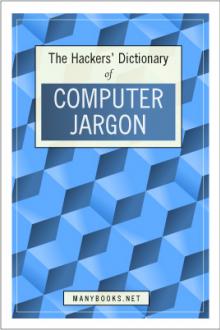

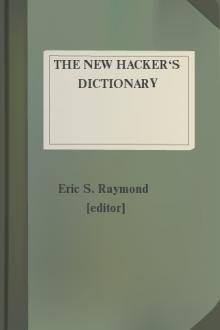
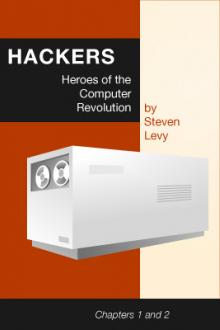
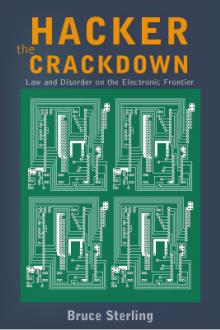
Comments (0)